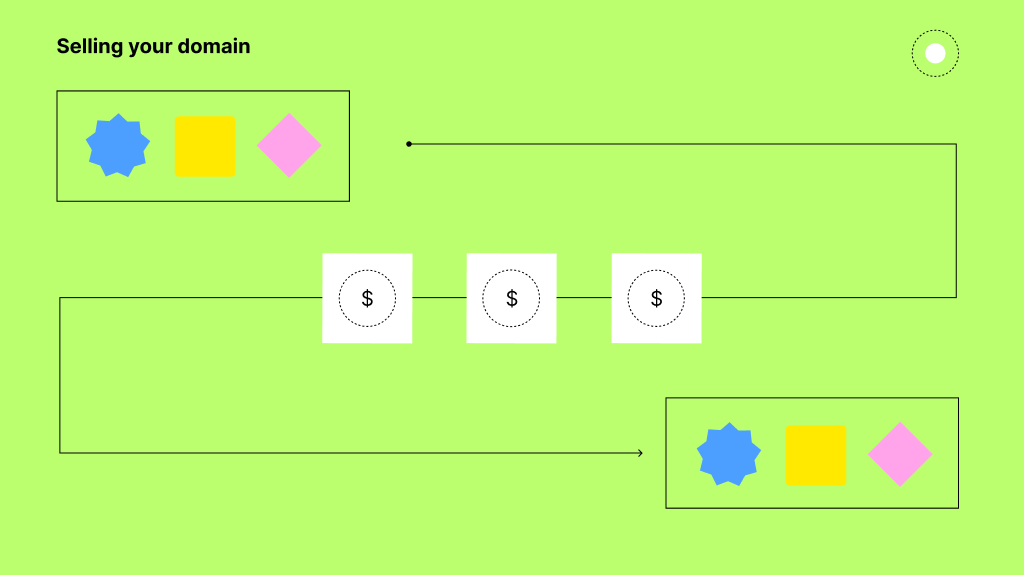Don't let domain expiration shut down your business overnight. When it expires, your website disappears and customers can't reach you. Many businesses lose sales and trust when this happens. The good news? Checking when your domain expires is quick and easy. Let's look at how to track these important dates so your website stays up and running.
What is domain expiry (and why should we care)?
When we register a domain name, we're basically renting it for a while, could be one year, might be five. Once the time's up, if nobody renews it, the domain stops working. (New to domains? Have a look at our explainer on domain registration vs web hosting for the basics.)
For Australian businesses with .au domains (including .com.au, .net.au, and the newer direct .au extensions – read more in our 2025 guide to domain extensions), there are ‘extras’ you should know:
Global domains | Australian domains (.au, .com.au, etc.) |
WHOIS shows when they expire | auDA rules hide expiry dates |
Usually get 30 days grace | 30-day grace period |
Sometimes extra time after grace period | No extra time after grace period |
Can sometimes get them back even later | Stricter cutoff before someone else can grab it |
The consequences of letting your domain expire can be a real pain if you don’t pay attention to it:
Your website disappears
Emails stop working
Google rankings? Potentially gone.
A competitor might grab your domain
Getting back up and running takes time and money
💡 QUICK TIP: Australian business owners should be especially vigilant as .au domains follow stricter expiration policies than many global domains.
Checking your domain's expiration date
Australian .au domains work a bit differently than others. The .au Domain Authority (auDA) has special privacy rules that limit what info gets shown publicly. So, how do you check when your domain expires?
1. Log in to your hosting account dashboard
The most reliable way? Log in to your hosting account. You should see:
The exact date your domain expires
Options for renewing
Auto-renewal settings
Current status of your domain
2. Email & personal reminders
Good hosting companies (like us) will often send renewal reminder emails to whatever address is on your account. These usually start about 60 days before expiry, then get more frequent as the date gets closer. So make sure you keep that email address updated.
💡 QUICK TIP: We recommend also setting up your very own calendar reminder at least 30 days before your domain's expiration date to ensure you have time to renew without any service interruption.
3. WHOIS information
Because of auDA's privacy rules, public WHOIS searches won't show expiry dates for .au domains. But you can still check other ownership details:
Use our a WHOIS lookup tool
Put in your domain name
Check what details show up
Want to know more about WHOIS and .au domains? Have a read of our guide to using WHOIS for .au domain ownership. As we say, the most reliable way to check your .au domain expiry date is by logging into your domain registrar's account (whether that's us, or another provider).
Domain expiration lifecycle in Australia
When a domain registration expires, it goes through several phases before becoming available for registration by anyone. Understanding this timeline is crucial for domain owners to avoid losing their domains.
Phase | Duration | Sample Dates | Status | Actions |
Active Registration | Original registration period | Until April 1, 2025 | Domain fully functional | Regular renewal available |
Expiration Date | Immediate | April 1, 2025 | Website and email services stop working | Renew immediately |
Grace Period | 30 days | April 2 - May 1, 2025 | Domain inactive but reserved for owner | Renew at standard price with no penalties |
Pending Deletion | Varies by registrar (typically 30-45 days) | May 2 - June 15, 2025 | Domain unavailable for registration | Last chance to recover (may involve redemption fees) |
Public Availability | Permanent (until registered) | June 16, 2025 onward | Domain released to general pool | Anyone can register the domain on first-come, first-served basis |
For .au domains, this cycle is notably shorter than for many global domains, which often have extended redemption periods that can last months. In Australia, once your grace period ends, recovery becomes a lot more difficult.
Time-sensitive: The exact timing can vary by registrar and domain extension (.com, .org, etc.)
Increasing costs: Generally, the longer you wait after expiration, the more expensive recovery becomes
Service disruption: Even during the grace period, your website and email services will likely be inactive
Best practices to prevent domain expiry
1. Turn on Auto-Renewal
This one's a no-brainer. Auto-renewal means the system handles it without you needing to remember. Most places have this option tucked away in settings somewhere.
With this switched on, you won't wake up one day to find your domain gone, especially important since some domains sell for crazy money if they become available.
Make sure to log into your hosting account and have this turned on.
2. Keep Contact Details Current
Make sure we've got your current email and phone. Sounds obvious, right?
But you'd be surprised how many people miss renewal notices cause they changed their email three years ago. If staff changes happen, think about using a role-based email address like [email protected] rather than [email protected], just in case Bob moves on.
3. Register for Longer
Extend your registration to 2-5 years instead of just one. Fewer renewals mean fewer chances to stuff it up. Plus, many places give ya a discount for multi-year registrations. Just make sure you make note of it and can see exactly when it is up for renewal again.
4. Use Multiple Monitoring Methods
Don't rely on just one notification system. Combine auto-renewal with calendar reminders and third-party monitoring tools for redundancy. Even a good old fashioned calendar might do the trick, the more reference points and reminders the better.
5. Document Domain Information
Create a secure record of your domain details, you should be able to access this through your hosting platform but if you request it they should be able to provide it for you.
Registrar name and account information
Registration and expiry dates
DNS settings
6. Consider Upgrading to a .au Domain
If you currently have a .com or other generic domain extension, consider securing the .au equivalent. The benefits of changing to a .au domain include stronger local recognition, potentially better SEO for Australian audiences, and access to auDA's strict governance that helps protect your online identity.
What to do if your domain has expired
Whoops - missed the renewal? Don't panic quite yet. Here's the plan, re-review the lifecycle of the domain above and get an idea of where you are in the process.
Act fast: Seriously, this is a high priority job.
Chat with us: During the 30-day grace period, we can usually fix it pretty quick. Get in touch with us at Webcentral and we'll walk you through it.
Know the timeframes: With .au domains, you've only got that 30-day window. After that... well, it gets complicated. Unlike some other domains, there's generally no extra time after the grace period.
Got a backup plan?: If your site absolutely needs to stay up during this mess, maybe throw together a temporary domain as a stopgap.
💡 QUICK TIP: Need help? A bit confused about what to do? Shoot open a live chat at Webcentral, and we’ll help. We’re open 24/7 with real humans behind the keyboards.
Take 5 minutes today
Take five minutes today to check when your domain expires and fix your settings. Trust us, you'll thank yourself later. See, your domain name keeps your business visible. Understanding expiry dates, setting up a few alerts, and following some basic practices will save you headaches later.
For .au domains, remember you've got a shorter window to fix things if they expire compared to some other domains. Makes staying on top of it even more important. And while you're thinking about keeping your site running, maybe have a look at your website security for other ways to keep things ticking along nicely.
Will I get notifications before my domain expires?
Yeah, most of the time. But they might land in your spam folder or go to an old email address you don't check anymore. Don't just sit around waiting for alerts. Go and find where your hosting company is sending out emails.
Can I get my domain back after it expires?
During the grace period (30 days for .au domains), usually no worries. After that? Gets tricky, sometimes impossible. You may end up in a bidding war to get your own domain back.
Is auto-renewal foolproof?
Usually works fine, but if your credit card expires or doesn't have enough money, it'll fail. Set calendar reminders as backup and double check everything is working as it should.
What if I want to buy a domain someone else owns?
Fancy a domain that's already taken? We've got ways to help. Check out our guide on how to buy a domain that's already registered for some ideas.
Need help with your domains? Got questions about expiry dates? Give us a shout at Webcentral, we handle domain queries like this every day.

.webp)


-min.png)